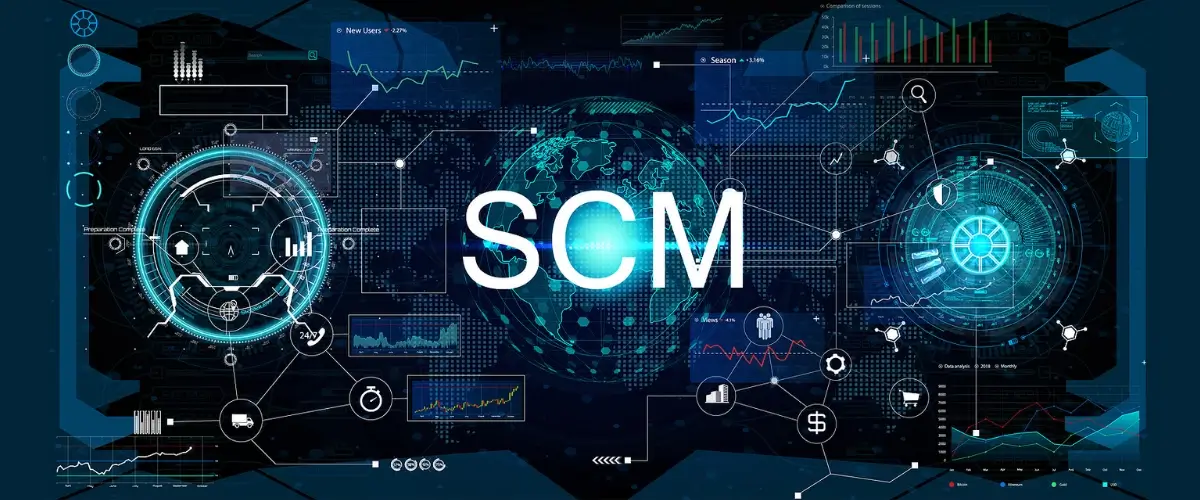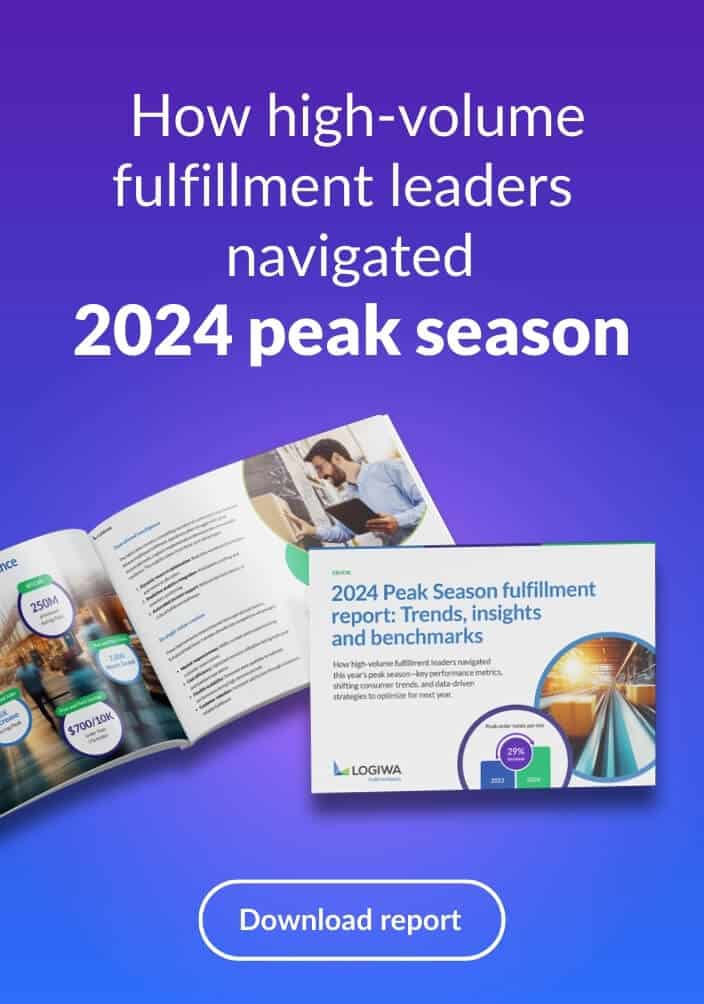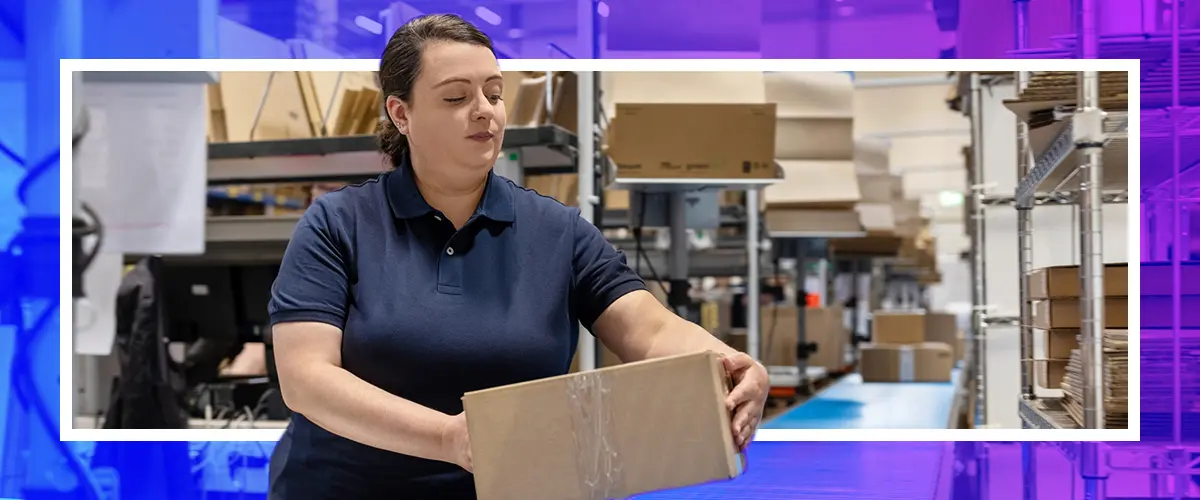Supply Chain Management Strategy & Future-Readiness
Along with the huge benefits due to technology over the last decade, many new challenges have also surfaced. This is especially evident in supply chain management. If you work in any meaningful way with supply chain solutions, then you’re probably facing some or all of these scenarios:
- You (and your customers) want more exact and real time shipping location information.
- Increased supply chain complexities (diverse locations, providers, manufacturers, etc.).
- New supply chain obstacles (delays and cancellations, such as due to COVID-19)
- Growing customer demand about how products & goods are packaged and sourced (due to environmental and/or ethical motivations).
One response that helps address all of these challenges is increased supply chain visibility. Still, what does increased visibility entail, and even more important, how do you achieve it? Let’s find out.
Contents
What is Supply Chain Visibility?
Supply chain visibility is the ability to visualize your inventory, orders, order movement, supply sources, and financial transactions, as they move through every node in the supply chain. How far this extends from your point of reference makes all the difference. For instance, do you know who your tertiary providers are? If you don’t, you’re not alone as most companies have no idea.
Still, it’s more than just having the information at your fingertips. The real power is its ability to optimize, automate, strengthen, and pivot processes when needed.
Digital Transformation in the Supply Chain
Modern supply chain strategy is just one component in the overall digital transformation race. Companies of all sizes continue to implement new technologies to improve operational speed, accuracy, and yield while simultaneously watching ROI.
The winners will be the ones that implement the right technology, at the right price and with the highest level of integration. For example, online storefronts, logistics, and warehouse management software (WMS) can all work together to make processes as seamless and transparent as possible. The other key factor, which has recently risen in importance, is supply chain resilience.
The answers don’t always fit in conventional boxes either. For instance, companies like UPS are developing solutions to hack the last-mile delivery challenge. The company did it by launching an electric bike program, which expedites deliveries in areas with limited parking. The pilot program also celebrated the added bonus of reducing harmful emissions. Even something as simple as bike delivery can be leveraged into a business advantage for supply chain and business transformation.
The Impact of COVID-19 on Supply Chain Management
Everything about supply chain process development was accelerated by COVID-19. For decades, supply chain improvement was all about lower costs, tight inventories, and better asset utilization. However, the COVID-19 crisis revealed many longstanding operations lacked the resiliency to deal with deeper disruption.
Better visibility, therefore, not only answers traditional concerns, but also those we face in our evolving reality. For example, the right data makes it easier to discover waste and illegal or unethical practices. As consumers and regulatory bodies increase their demands related to transparency, businesses will need the right tools to remain compliant.
Mapping Out The Supply Chain
Today, supply chain participants may have limited visibility even into their top-tier suppliers. Visibility into secondary or tertiary suppliers is very uncommon. This makes it difficult to anticipate problems or identify the true source of any delay.
Meanwhile, a few companies have taken the time to accurately map their supply networks in as much detail as possible. This offers visibility into the structure of their supply chains, so when disruption does occur, it’s easier to identify bottlenecks and locate alternate supply sources.
While this may sound like a massive undertaking for some brands, WMS software for 3PL helps make realization easier. One strategy is to gain as much insight into your own inventory base then track it both forward and backward. For example, automated lot batch tracking places your inventory on a solid data footing upon which you can build out accurate supply chain maps.
The most common supply chain mapping approach is to analyze the bill of materials and focus on key components. You begin with the top five products (by revenue) and then drill down to each of the component suppliers, and subsequently their suppliers and, ideally, all the way down to raw materials suppliers.
Nuts Bolts of Supply Chain Logistics Management Visibility
Given the high aspirations of transparent supply chain methodology, how can a business move closer to that endpoint now? Some elements to consider include:
Cloud Computing
Attempting to build an in-house solution would not only be difficult, but foolhardy. Cloud computing not only offers development agility and easy access, but it also contributes to easier integration which is essential to achieve true end-to-end visibility.
Cloud computing is a must-have for maximum visibility of the supply chain into your organization and trading partners. It enables the rapid deployment of applications and connectivity to share data. For example, many businesses opt for software-as-a-service order fulfillment software. In these packages, tools like advanced integration capability, shipment automation rules, and multi-warehouse order routing are already built in.
Internet of Things (IoT)
Improved and miniaturized sensor and RFID technology have dramatically increased the ability to digitalize the supply chain from start to finish. It’s not inconceivable that any material or component could be folded into a system that tracks the entire supply chain. The data could then be analyzed for points of friction or alternate process routes that improve efficiency and optimize resource use.
Big Data
One of the greatest challenges to the modern supply chain isn’t the lack of data, but how to access, cleanse, and make the data useful. Artificial intelligence and machine learning will be necessary to manage the massive amounts of data generated by supply chains. By examining data, from diverse structured and unstructured sources, major leaps in efficiency can be achieved. The power of Big Data and AI is in the ability to rapidly process and make sense of vast amounts of data to detect patterns and opportunities for operational improvement.
Blockchain
With its ability to provide a public, immutable, non-corruptible transaction ledger, many are looking to blockchain to solve the supply chain transparency riddle. According to PwC, blockchain has the potential to:
- Boost supply chain transparency & traceability (permanent, single source data trail)
- Maximize security, immutability & authenticity (prevents data corruption, loss, and fraud)
- Minimize complexity (fewer intermediaries, improved QA, and better automation)
- Enhance operational efficiency (compliance, less costs, less error)
Currently, blockchain is used in ports in Singapore, Rotterdam, and Antwerp. Meanwhile, the Trade Community System is developing a blockchain based ecosystem where global trading partners can securely share information in end-to-end visibility.
Beyond Supply Chain to Digital Transformation
The impact of supply chain technology, 3PL WMS, goes far beyond supply chain maps and finding the fastest trucking routes. In fact, trucking, rail and ocean freight have been tracked by satellite through telematics for decades. However, the captured data hasn’t been leveraged to its full capacity, but that’s quickly changing.
For example, GPS data, weather patterns, fleet management, and driver schedules can be embedded into one interlocking system that analyzes historical trends so that the best routes can be selected in real time. The larger goal is to gain highly nuanced insight into inbound and outbound logistics to improve KPIs such as shipping times and costs as a percentage of sales.
How might this look? One example is location intelligence. This implies gaining geographic based data to improve business decision making. With more granular knowledge about a location, supply and demand predictability can be fine tuned. On the receiving end, you forecast supply chain delays. As a provider, you channel goods or products to the right place to anticipate rising demand.
Unlock a personalized tour of Logiwa IO
Proactive and Future-Ready
As mentioned earlier, beyond the significant business benefits, improved supply chain visibility also improves the strength of your company in other ways. Many feel COVID-19 should not be considered as an isolated event, and similar scenarios may occur in the near future. Furthermore, both man-made and natural disasters could become more frequent, which also poses a significant threat to any logistics plan. The companies with adequate supply chain software and strategies in place will deal with these occurrences with greater agility and business success.
Societal and governmental pressures cannot be ignored either. Consumers (and regulators) increasingly want to know if any part of your supply chain is a significant threat to the environment. Also, they want to know if any child or forced labor might be involved. Without adequate transparency, it’s difficult to provide satisfactory responses to these new demands.
The third pressure point is that many companies are rapidly advancing to implement modern supply chain technology into their core business strategy. They are fully aware of the benefits and also of the risk of not being able to keep up. For example, if logistic costs can be driven down due to technology assisted insight, the savings could be extended to customers, and lower prices help win market share.
Where to Begin?
For many, the task to modernize might seem overwhelming, however, the risk of doing nothing at this stage is even more dangerous. Many companies, therefore, are outsourcing to software providers who have already done much of the legwork. These include third party logistics, warehouse management systems, fulfillment solutions, and supply chain mapping providers. The solutions are out there. You just need to Schedule a WMS demo.





